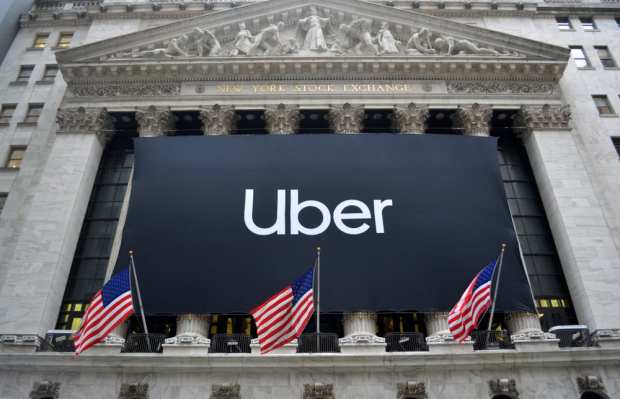Uber’s Growth Slows Sharply

All eyes were on Uber’s first quarterly report as a publicly traded company. Management pointed to some improvements in the competitive pricing dynamics in ridesharing that may help soothe red ink (even as growth slowed on a year-over-year basis, and saw synergies forming between ridesharing and Uber Eats, which doubled from a year ago. Here’s the four-star rundown.
There weren’t a lot of huge surprises in Uber’s debut earnings report as a publicly traded company, but granular detail was in abundance. The headline numbers — the ones watched by Wall Street as the ride-hailing giant navigates the globe and markets ancillary to its core ride-hailing business — showed a slowdown in growth amid red ink.
The loss was $1 billion in the latest quarter, which ended in March. Consolidated revenues were 20 percent higher than a year ago to $3.1 billon, slightly edging the Street, but slowing from the 25 percent rate that had been seen last year. Expense growth at 35 percent outpaced top line growth. The loss was roughly in line with expectations.
Drilling down into the numbers, and amid a climate where management said investments in core and new businesses will continue, gross bookings were up 34 percent — 41 percent when measured in constant currency, and excluding markets that have been exited. That equated to $14.6 billion, the company said in supplementary materials that accompanied the earnings release. The growth rate showed a slowdown from 53 percent a year ago.
The company also disclosed that monthly active platform consumers, as measured in millions, came in at 93 million at the end of the latest period, up from 70 million a year ago. That’s a growth rate of just under 33 percent, slowed from the roughly 43 percent rate that had been seen year over year from 2017 to 2018 in the first quarter.
Uber CFO Nelson Chai told analysts on the conference call that there is an opportunity to reduce customer promotions and driver incentives, as both he and CEO Dara Khosrowshahi said the ride-hailing environment was becoming a bit healthier (with a nod toward peers and competitors such as Lyft). Management noted that marketing expenses might lighten a bit — at least, as measured as a percentage of the top line. Competition, the CEO added, is now “more focused on brand and products” rather than promotions.
The “Other Bets” businesses — with freight, bikes and scooters as part of that classification — saw gross bookings of $132 million.
Overall contribution margin was negative 4.5 percent, markedly down from the 17.9 percent in the year-ago first quarter. (It’s defined as profit divided by net-adjusted revenue.)
The focus still remains on expanding a global presence, such as with Uber Eats (at about 17 percent of the top line, or $536 million), where markets are marked by well-funded startups, said management. Uber Eats saw its business roughly double, said the firm, with strength in markets such as Latin America. The nascent freight business was up about 200 percent in the quarter.
Food-focused businesses may indeed be a huge opportunity in other countries, said Khosrowshahi, perhaps even larger than the ride-hailing opportunity in some markets, which he said would be an “enormous win.” He added that the company would still be the dominant food delivery firm in markets beyond China.
Beyond bookings, the growth as measured in adjusted net revenue for rides was 10 percent. For Uber Eats, it was about 31 percent (adjusted revenues take into account incentives and referrals). Management said on the call that there was some potential for what amounts to cross-pollination — as many users of restaurant delivery (about half, according to details on the call) were not necessarily using the ride-hailing features.
With an eye on some competitive dynamics within rides (where the CEO said there may be consolidation, with possible acquisitions in Uber’s future), growth came across all regions of the world except for Latin America (down 13 percent), amid steep competition. In North America, however, growth topped 26 percent to $1.7 billion. (New York may be bumpy, though. Management noted on the call that rates in that urban market had gone up, though volumes had been pressured a bit). In Europe, the Middle East and Africa, revenues were up 26 percent to $487 million, while they were up 6 percent to $267 million in the Asia-Pacific region.
